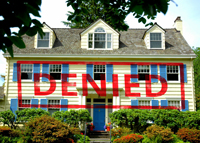Homeowners in historically redlined neighborhoods gained less than half as much home equity over the past 40 years as elsewhere, a study by home listing service Redfin has found.
The analysis demonstrated the lasting impact of an economic practice that, while formally outlawed, has persisted in many forms, Inman reported.
In neighborhoods where redlining was practiced, lenders would draw a “red line” around neighborhoods that, based on demographics, were deemed too risky for federal mortgage loans. Instead of the cheap federal financing available to white families, black homeowners had to seek more expensive loans.
Read more



In neighborhoods where redlining was practiced, the study found that homeowners had accrued $196,050 in home equity since 1980, versus $408,073 in non-redlined areas. The $212,000 difference contributes to a wealth gap between blacks and whites, as does the lower homeownership rate among black Americans overall.
Their homeownership rate remains low even in neighborhoods where redlining was not practiced. It has declined since 1980, dropping to 44 percent in 2017 from 50 percent, while for white families, it increased by 4 percentage points to 71 percent.
Segregation of neighborhoods remains common in the U.S. Steering of prospective buyers plays a role: A multiyear investigation conducted by Newsday published last year revealed that nearly half of real estate brokers tested on Long Island discriminated against black homebuyers. [Inman] — Georgia Kromrei
